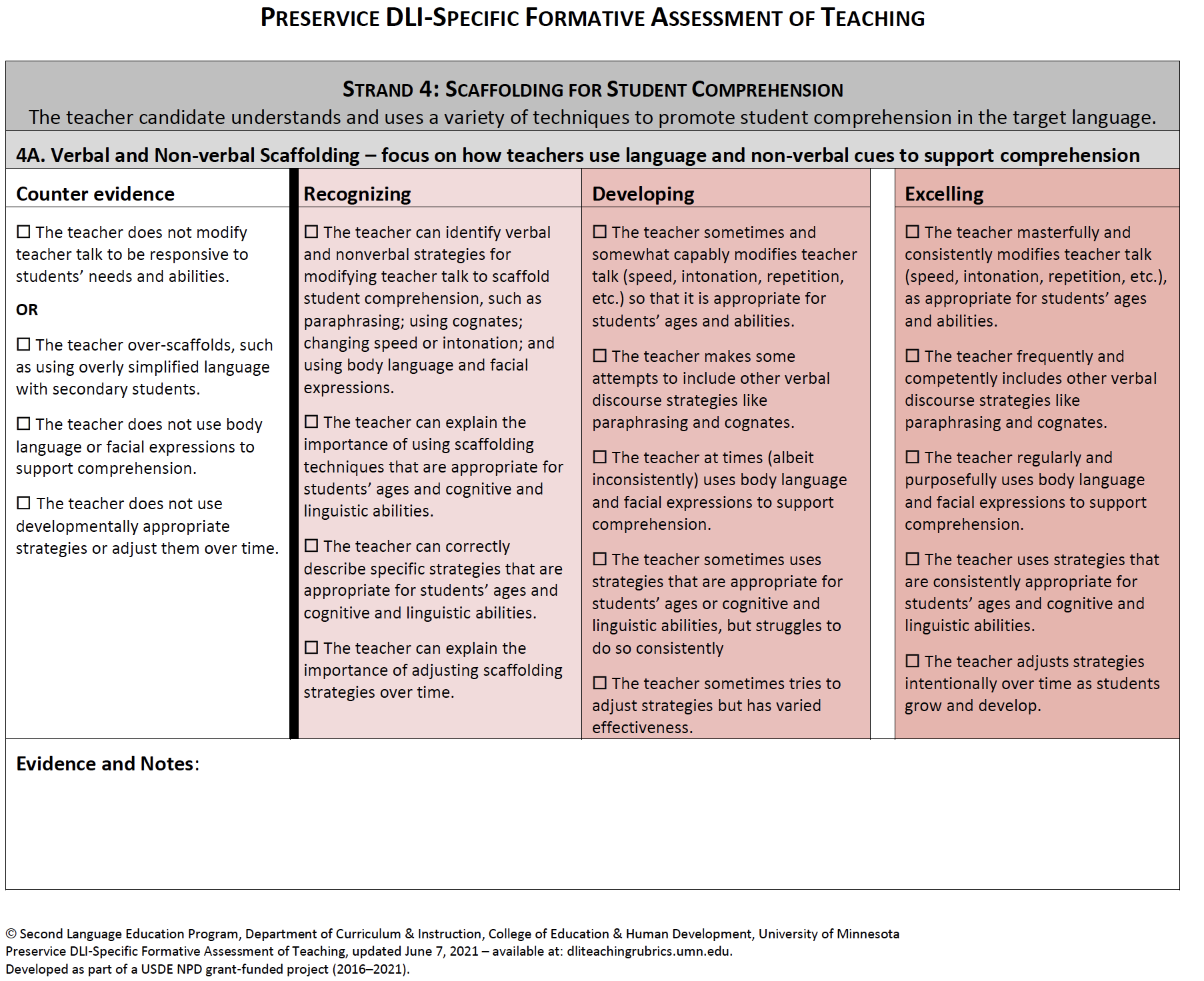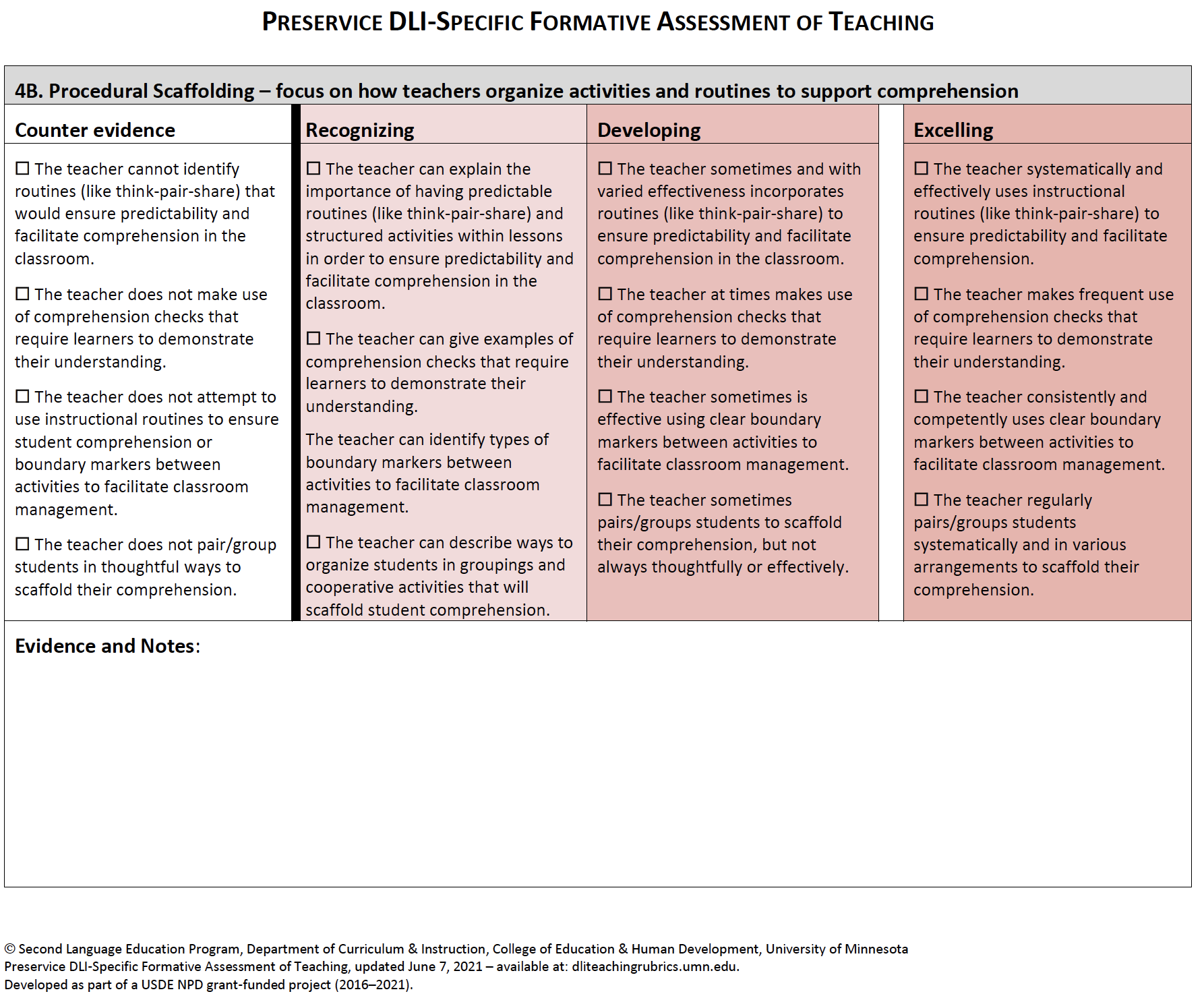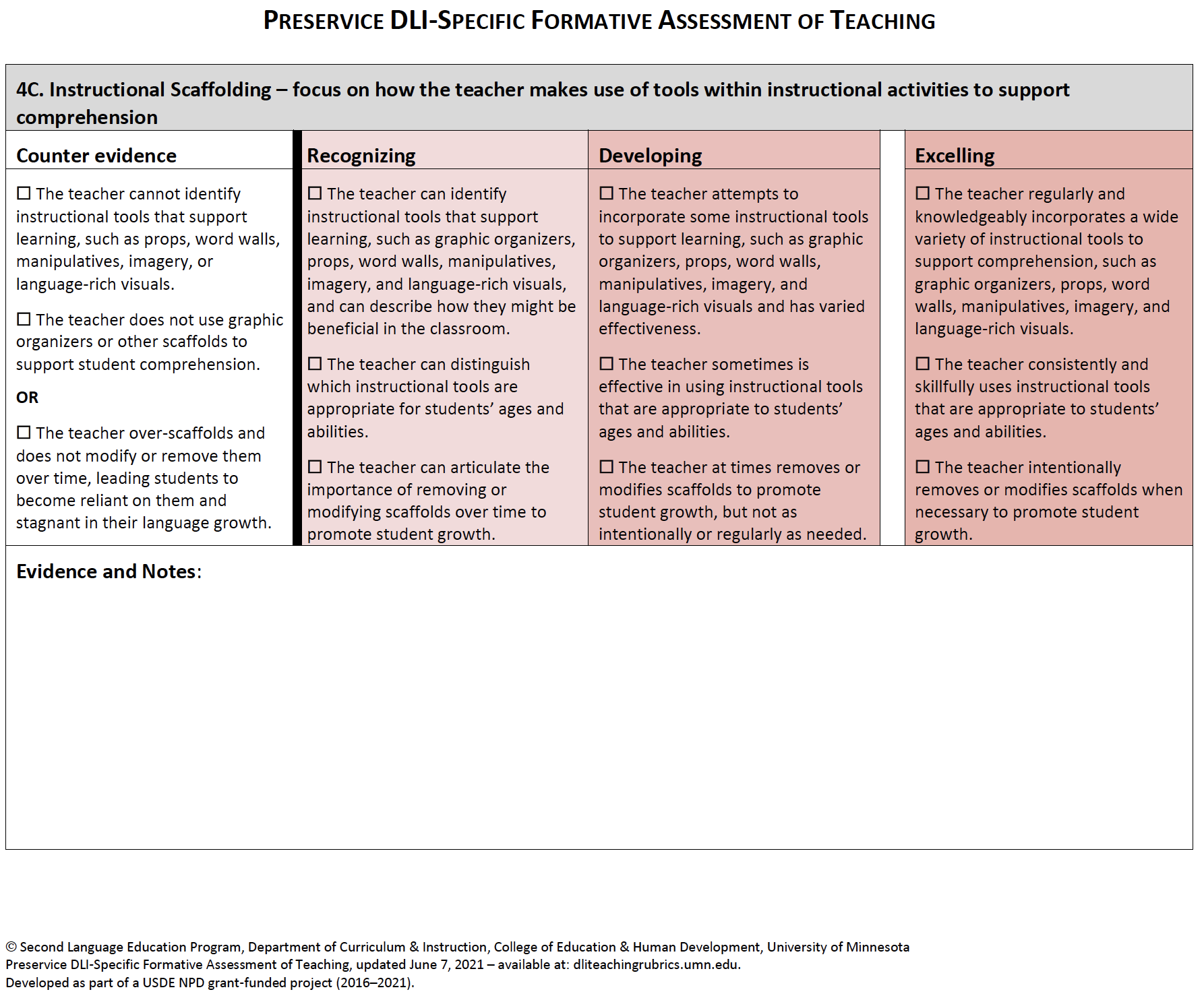Rubric level descriptors
Recognizing, Developing, and Excelling serve as developmental stages, whereas Counter Evidence does not.
The three developmental stages and the counter evidence category are described as follows:
Recognizing – When teacher candidates are at this stage, they have achieved a level of awareness about the described practice. They recognize and understand the importance of the practice for effective student learning. They are able to describe specific strategies, and they may be able to cite theory behind a specific practice or recognize it when they see it in other teachers’ classrooms. However, they make few (if any) attempts to apply their understandings in practice. If attempts are made, they are rarely (if ever) effective.
Developing – When teacher candidates are at the developing stage, they not only understand the importance of the practice for effective student learning, but they seek to make it part of their own teaching repertoire. However, they are not able to apply the practice consistently, possibly because of circumstance (e.g., structural limitations at that point in their teaching program or clinical placement particulars) or ability (i.e., attempts are ineffective or infrequent; application may occur with some students, some of the time, or in some contexts).
Excelling – Teacher candidates are excelling when a particular practice has become a part of the teacher candidate’s daily repertoire. We see this practice in action, live, and at play in the classroom on a consistent basis. This level describes what experienced DLI teachers are able to do. We do not expect preservice teacher candidates to perform at this level. Yet, we believe they need to know how high quality practice is described and therefore include this level in the rubric. A narrow white column precedes the Excelling level to indicate that a preservice teacher candidate’s performance is expected to be no higher than the Developing level.
Counter evidence – The term counter evidence is used for examples in which the teacher candidate’s actions impede and/or work against effective enactment of DLI teaching. When counter evidence is indicated in the rubric, it is a strong sign that the teacher candidate needs further coaching and education.Counter Evidence does not serve as a developmental stage. To represent this, Counter Evidence descriptors appear with a white background (devoid of the color reflecting the developmental stages), and a thick, bold line stands between Recognizing and descriptors that represent Counter Evidence. The line stands as a firm boundary for evidence of teacher candidate behaviors and performance that do not reflect the fundamental tenets of DLI education and that may potentially harm children’s learning opportunities in the program. We call out such performance in this rubric purposefully to name behaviors that are counter to research-based practices for DLI programs.


